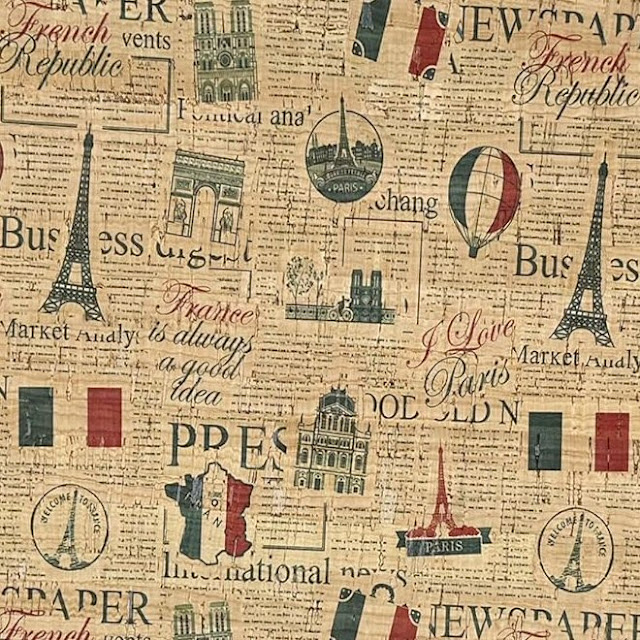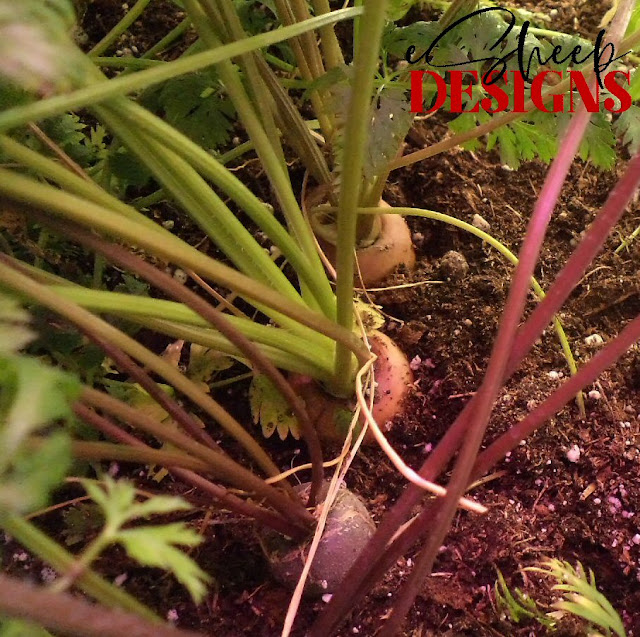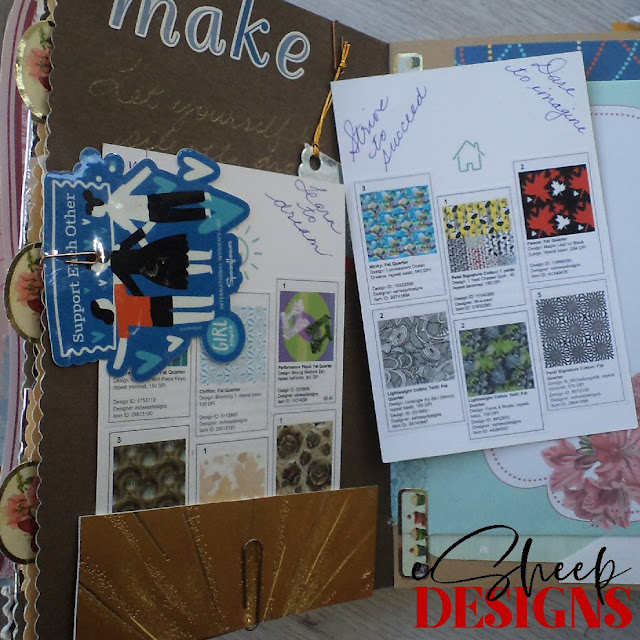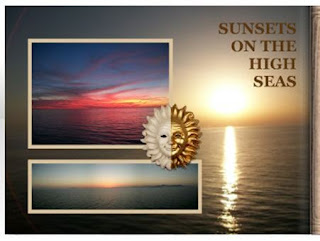
|
| How can we sew, craft and live more sustainably? |
Are you someone in search of a new hobby? (As opposed to someone "not needing"
another hobby. 😉)
If so, is there such a thing as a "bad" hobby? Maybe one that's not so great
for the environment or not sustainable? Does your favourite pastime pass
muster for being (somewhat) green?
About four years ago, I became aware of a craft called
diamond painting. A friend was gifted with a kit and she completed it as part of her pandemic
pastimes (photo below).
It didn't occur to me at the time, but what an environmentally unfriendly
hobby it seems to be!
For those who don't know what diamond painting is, it involves sticking
tiny coloured plastic gems (called "drills") onto a coded mat to create
sparkly pieces of art. It's essentially a plastic version of paint by
numbers that produces a finish resembling cross stitch.

|
| An example of diamond painting done by a friend... |
Those who are strong supporters of the craft say that the detailed
attention required to do it has a calming effect on them and thus improves
mental health. Personally, however, I can't get over the fact that someone
actually invented yet another way to introduce millions upon billions of
tiny bits of plastic – contained in small plastic bags, sorted by colour,
no less – into our lives.
Not for me, and to be totally honest, I usually find the results gaudy and
"unhangable". (My other half was given one as a thank you gesture. He had
told the crafter that he liked it, but it's still rolled up in its box, as
there's no way in the opposite of heaven that it's going up on our wall.)
Mental health benefits aside, diamond painting doesn't seem to qualify as
a sustainable hobby.
On the other hand, whenever I do a search for "environmentally friendly
hobbies", sewing is almost always included in the results.
More and more, it's due to the fact that sewers are sourcing supplies in
thrift and second-hand stores... and their own closets. (As for sewing
machines, they've always been common finds in garage sales and the like,
not to mention that you can sew by hand.)
But sewing is not without its environmental controversies, apparently.
Last fall, someone posted a comment on a YouTube video, strongly
admonishing "the bag world" for not acknowledging the problem of plastics
in making bags and purses, particularly as it applies to using vinyl as
the material of choice. This person thought that pattern designers should
be taking more leadership in discouraging the practice.

|
| Printed vinyl called Colorful Heart (by ONEART)... |
Apparently, apart from the usual faux leathers that have been around
forever, there are now all sorts of clear printed vinyls – called
TPUs: thermoplastic polyurethanes – that one can sew with; or more
properly, with which one can sew.
I've not made a bag entirely out of vinyl in years, but I do own a small
supply of (clear) vinyl that I sometimes incorporate into my sewing
projects. Most of it's repurposed, so I'm not so much contributing to the
problem per se, but I get the concern over how introducing more options
into the marketplace isn't necessarily a good thing. (That doesn't address
the ever-increasing practice of sports arenas and stadiums mandating "see
through" bags, but I digress.)

|
| Printed cork fabric called French Symbol (by SorenCut)... |
Fortunately, there are always better options when it comes to materials
for sewing that are environmentally friendly, even apart from repurposing
existing textiles. If being transparent is not a requirement, a material
that has a similar texture to vinyl/faux leather that is a more
sustainable choice is
cork.
In terms of cost, there doesn't seem to be a whole lot to differentiate
the two; a 12" x 53" cut of the TPU is about $23 (CDN) and a 12.5" x 52.5"
cut of the cork is about $26 (CDN). That said, most selections of cork are
always going to appear a bit muted compared to the colourful vibrancy
available in vinyl. I say most, because there are selections like
this one below that might convince you to try cork for your next project.

|
| Image courtesy of frameyourbag on Etsy... |
This particular piece is smaller than the others at only 26.77'' x 19.69"
– and sells for about $19 (CDN) – but it is definitely more colourful than
the usual variants of cork.
There is also an increasing movement among established sewers to "sew down
the stash." I don't know the actual numbers, but let's say that many
people have purchased fabric over their lifetimes, just to have it. Sewing
down your stash simply means that you will not buy new fabric until you
use up your own supply.
Gardening, in general, is another widely recommended sustainable, environmentally friendly hobby.
I really dislike outdoor gardening, but the indoor variant that hubby
started a couple of years ago has rubbed off on me... somewhat. I must
admit that it is tremendously rewarding to see seed, dirt, light and water
combine to grow actual food.

|
| Tomatoes, arugula, spinach, romaine and kale from our indoor garden... |
And all without the messiness of dirty dirt (indoor dirt is
arguably "cleaner", believe me), dealing with insects, and roasting under
the hot sun. I am so not suited for outdoor gardening! We grew
cucumbers along the side of our house last summer, and for a period of
several weeks, I refused to look at them. We had had an explosion in the
mosquito population and just venturing out onto the lawn next to the
garden was sure to provoke an assault by those pesky buggers.

|
| Emerging carrots... |
Inside, I'm able to put my hands into the actual plantings and fiddle with
leaves without fear of finding a huge spider climbing onto my fingers.
(Although, we have had aphid problems, so it's not all bug
free.). I'm not sweating in the heat. I've heard that some folks like the
whole experience of "being at one" with nature when they garden in the
traditional sense. They are welcome to it.
Scrapbooking Without Supplies
In the three or four years prior to starting this blog, I was very much into virtual scrapbooking. It was a relatively environmentally friendly hobby, quite in contrast to the ultra expensive, material-laden, and ultimately wasteful version of scrapbooking that was all the rage in the early 2000s.

|
| Two pages from a digital scrapbook that I made after a Mediterranean cruise... |
Digital scrapbooking allow you to scatter various embellishments over your
pages just as you would with physical scrapbooking; they're just not
tactile "things" with actual texture and substance. Words and text – in
various fonts – can be added anywhere, photos can be sized and arranged
and creatively edged without cutting, and there is virtually no end to the
types of paper you can select for the background.
As a bonus, you can also use any one of your own photos as the background
"paper" (see example at left), which you wouldn't be able to do easily
with physical scrapbooking.
After completion, your work can be printed out or left as an electronic
file. I don't know what today's preferred apps might be for digital
scrapbooking (it might simply still be called a photobook service),
but I used Shutterfly back in the day for at least two of my
books. (Wait for a sale before printing and you can usually get up to 50%
off no matter what resource you use.)
With digital scrapbooking, there is no mess, no need to hoard supplies,
and you can indulge your creative efforts without lugging around huge
boxes. (There are still scrapbooking events – conventions – that
crafters can attend, although they are not as popular or prevalent as
they were in their heyday.) And unless you print out every book you
make, you also don't need to find a spare room in your house to store
the actual scrapbooks that no one will want in thirty years.
Journaling
Which leads us to the topic of my most recent post, journaling. Whether a junk journal like what's been occupying my time, or an art
journal, or a travel journal, or just a day to day diary journal,
journaling is usually considered a sustainable hobby.

|
| Harvestng Spoonflower packing slips and cards for my jumbo junk journal... |
At the bare minimum, all you need is something to write on and something
to write with. With junk journals, art journals and travel journals, you
just populate the pages with appropriate ephemera, none of which you
need to buy... it's kind of like scrapbooking the way it was done in
the "old days". In the sense that these types of journals encourage reuse
of things that might otherwise be thrown away, they would definitely
qualify as being environmentally friendly. (Natasa at
Treasure Books has a video showing how she embellished an
entire journal using just an old magazine. Just yesterday, I harvested two images out of an Avon catalogue for my journal.)
Project JJJ Update
Speaking of, for those of you curious about my progress on the
JJJ project, you can do a virtual flip through of it (of the first
signature, in any case) in PDF format
here.
Reading, Writing & Stimulating Conversation
This last section is sort of a personal aside. I have always enjoyed
reading and writing and it suddenly occurred to me that they are quite
sustainable activities to enjoy: they cost virtually nothing.
During my ongoing search for quotable quotes for my junk journal, I came
upon a bunch relating to introverts. It may not surprise you
to learn that I am a die hard introvert who always plans her escape from
large gatherings before arriving at them. Introverts are not automatically
shy nor socially inept, they just find being in large groups of people
draining and need time alone to re-energize. (I regularly tell people that
there are only a handful of individuals in this entire world with whom I
can spend more than five hours at a time.) Anyway, it turns out that
reading and writing are – no surprise here – popular hobbies for
introverts.
The third item in the heading above may appear to you to be an outlier for
introverts, but yes, we love one on one conversations. In point of fact,
that entire heading is taken from my first real resume. In
lieu of extensive work experience, we were told to list some hobbies. I
quite correctly assumed that the description of "stimulating" would
attract attention and invite questions.

|
| Courtesy of BrainyQuote.com... |
I was at a fair sized gathering last month and had conversations with five
people whom I had never met before. Out of the five, one was truly a great
conversationalist, another was good. The remaining three... well, let's
just say that I don't know if they ended up learning anything about me
after our talk, beyond what little I offered up myself. (I know stuff
about them, because I asked.)
In the big scheme of things, learning and mastering the give and take of
meaningful conversation is a rewarding and sustainable hobby for everyone.
What do you think?








Hi Rochelle, I love a great conversation! I’m reminded that my mother could and would talk to everyone with the incredible skill of getting them to talk to her. I have been inspired by this memory of watching her and have taken to talking to almost all strangers I meet! I’ve found that most anything can start the conversation going and have spent up to 45 minutes having conversations with complete strangers. It’s a joyful exchange that makes me smile in appreciation. Marie
ReplyDeleteYour mom sounds like a wonderful person. Most people – strangers next to you waiting in line, for instance – respond well to a humorous comment or a kind gesture, which can kickstart enjoyable discourses. It's an effort that rewards both parties, as you well know.
Delete